This guide to reverse sear filet mignon will teach you everything you need to know to get perfectly cooked steaks every single time! Serve with a pat of garlic rosemary butter for an easy flavor boost!
This reverse sear filet mignon recipe involves slow-cooking your steaks at a low temperature before finishing them with a hot sear. The reverse sear method is incredibly forgiving, reducing the risk of overcooking your steaks and making it easy to achieve a perfectly browned, crispy crust in just minutes!
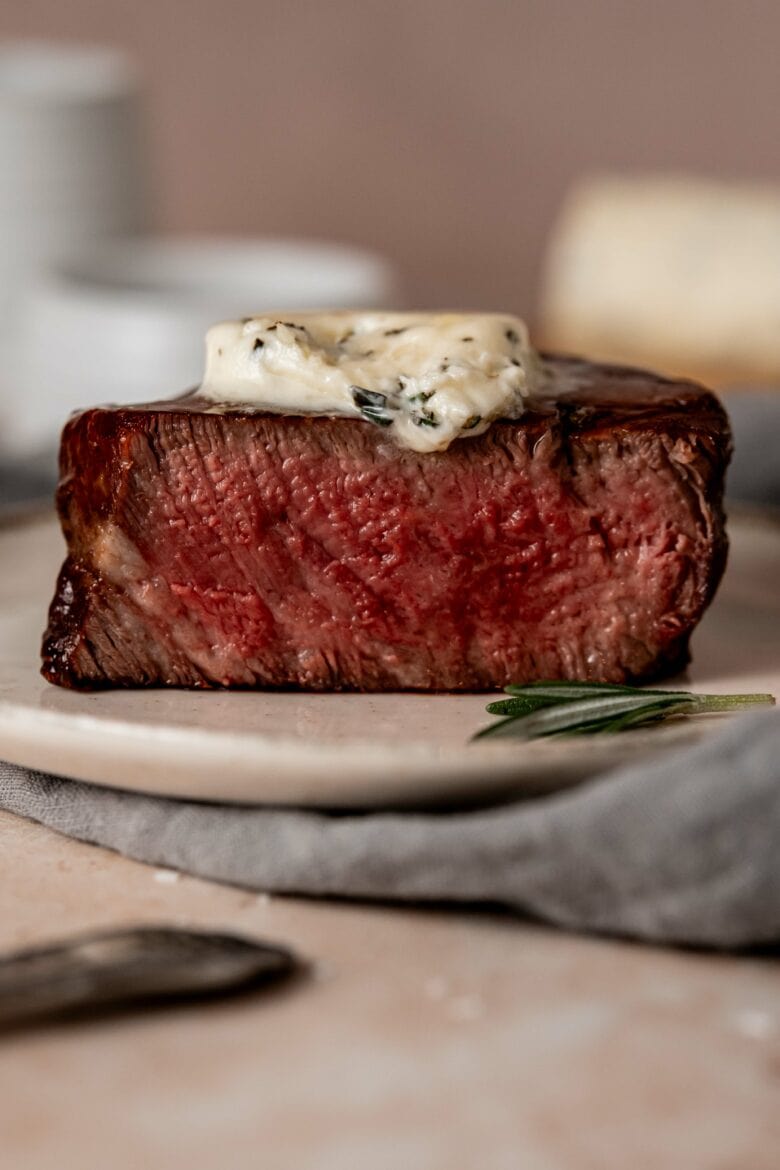
Recipe ingredients
So you’ve just sprung for a few really nice filet mignon steaks and now you don’t want to mess it up. We’ve been there! Don’t worry, this no-fuss reverse sear filet mignon recipe is the absolute easiest way to get the juiciest, most tender steak you’ve ever had. The best part? You need just three ingredients: filet mignon, salt and vegetable oil.
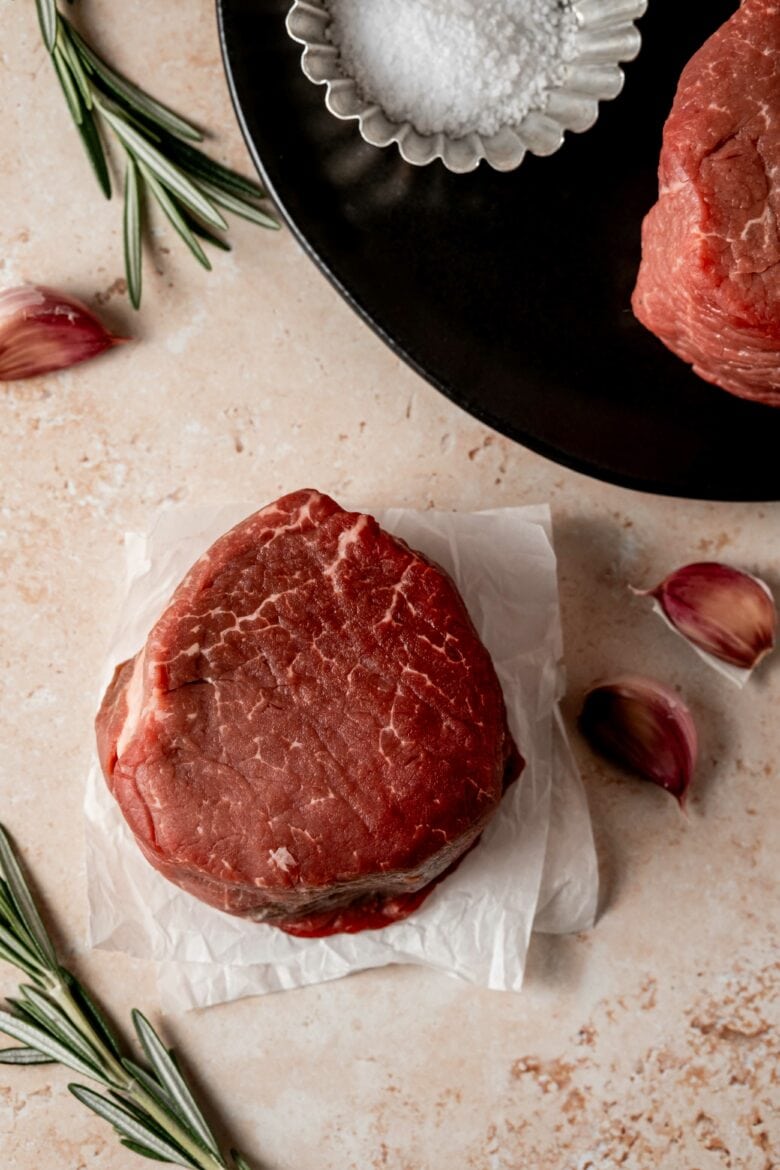
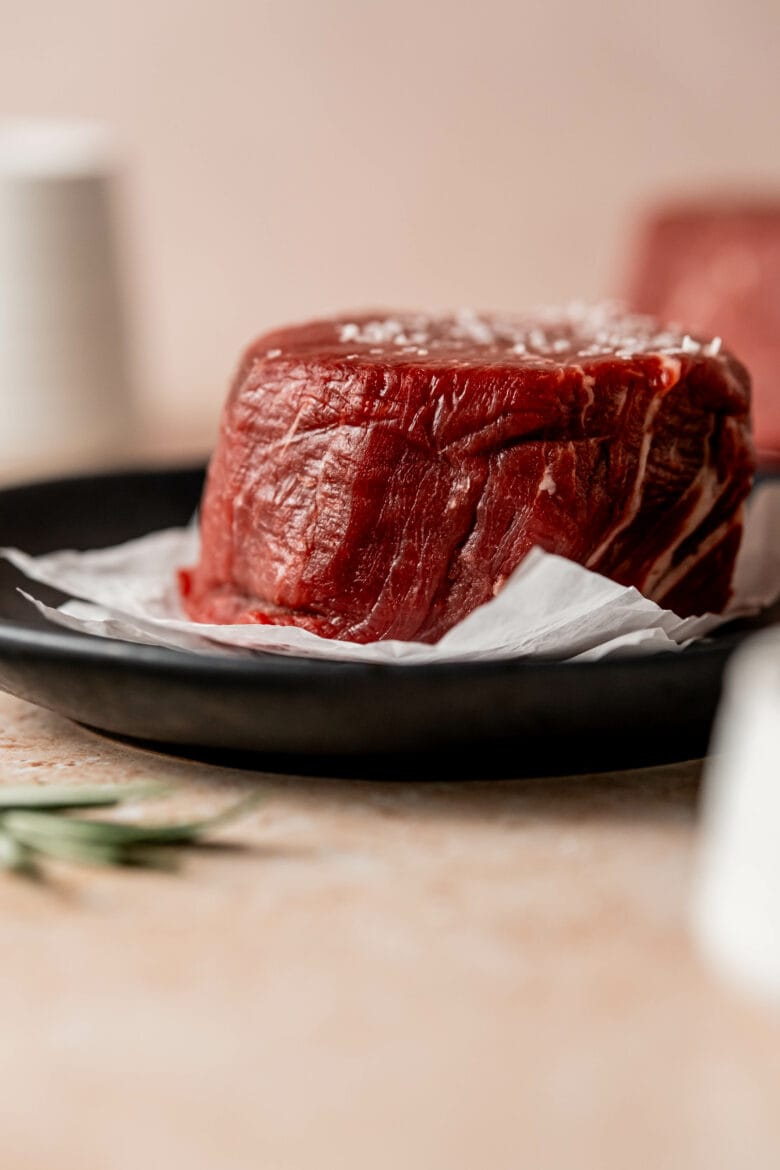
- Filet mignon: Thick-cut steaks work best for this recipe. I recommend choosing filet mignon approximately 2 inches (5 cm) thick. Make sure to choose filet mignon with a deep red color for the freshest steaks.
- Kosher salt: Salt is the only seasoning you need for your steaks, but feel free to add a bit of ground black pepper as well.
- Neutral oil: Use an oil with a high smoke point, such as vegetable oil, canola oil or grapeseed oil.
You’ll also need a rimmed baking sheet, wire rack, instant read thermometer and a cast iron skillet (or other heavy-bottomed skillet or even your grill).
Step by step instructions
After learning about the reverse sear method from culinary legend and food scientist Kenji López-Alt, we’ve been using it regularly in our kitchen to cook everything from T-bone steaks to reverse sear rack of lamb! And today we’ll be taking you through the process of making reverse sear filet mignon so you can get the perfect steak: medium-rare with a beautifully crispy crust.
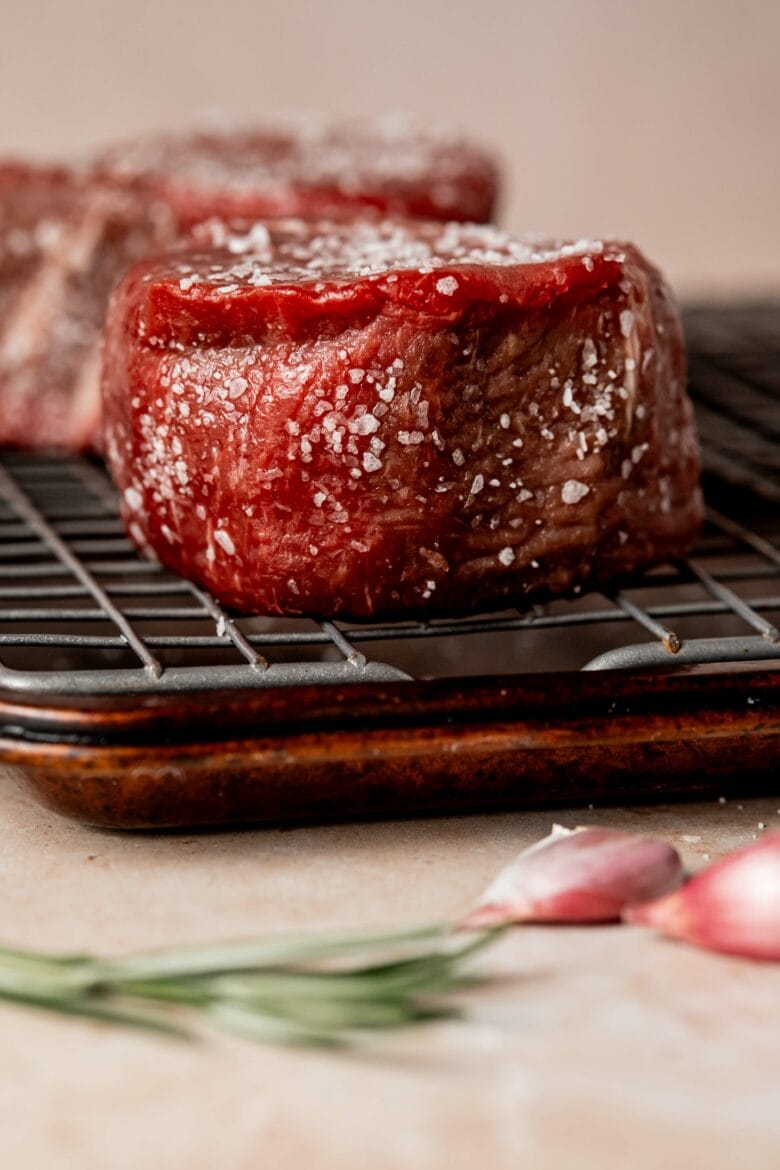
Step 1: Generously season the steaks with kosher salt on all sides.
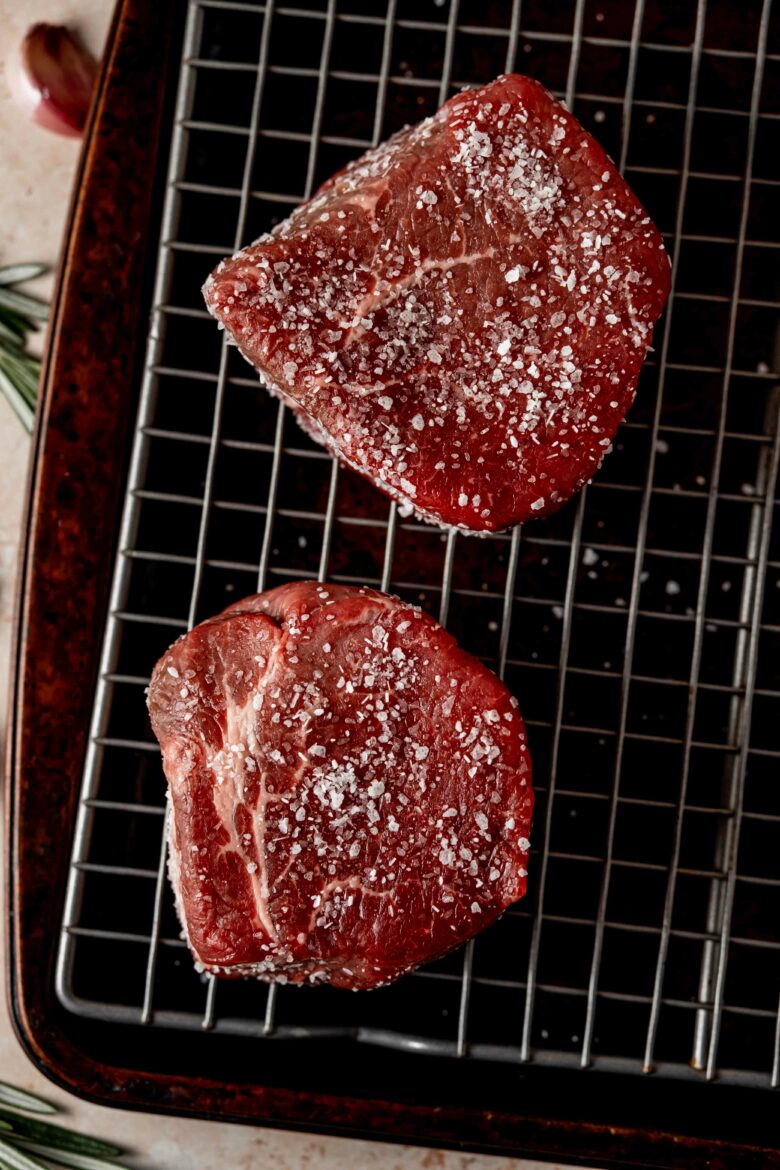
Step 2: Place the salted steaks on a rimmed baking sheet fitted with a wire rack. Transfer to the refrigerator and let sit uncovered overnight to dry out the surface. This step is optional, but we never skip it unless we’re very short on time.
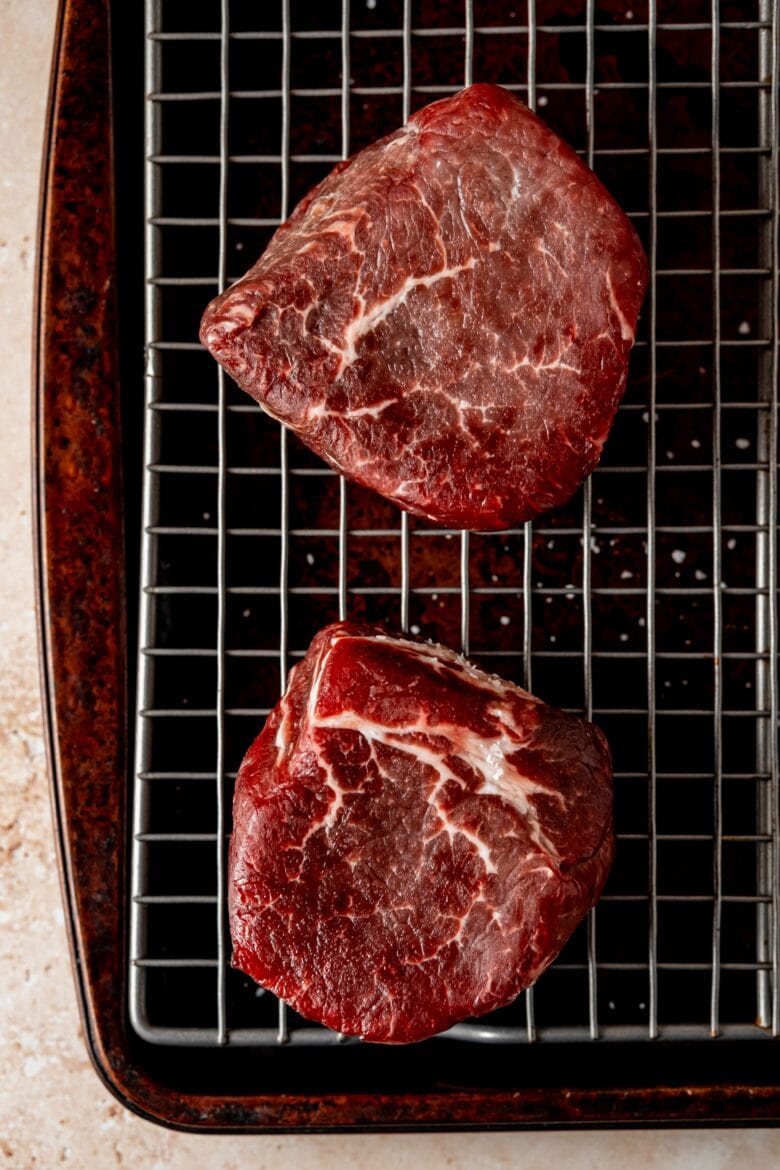
Step 3: Place the steaks on a wire rack set in a rimmed baking sheet. Transfer the steaks to an oven preheated to 240°F (115°C). Cook for 20-40 minutes.
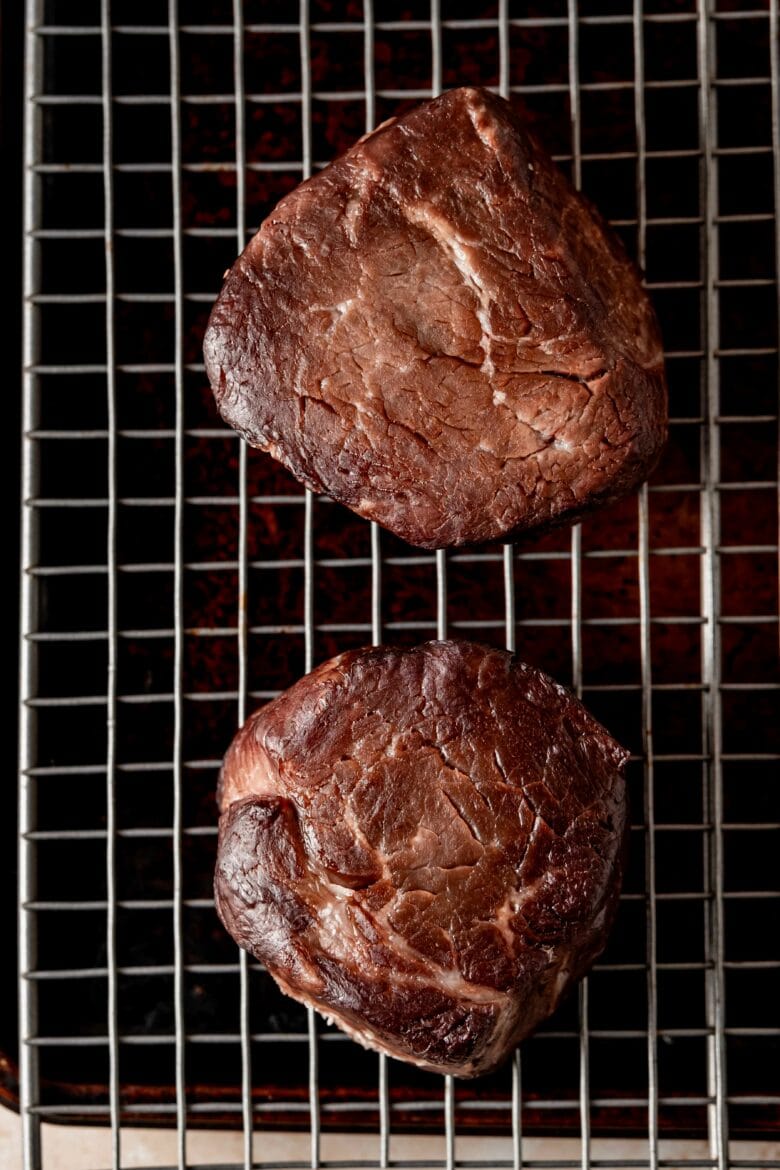
Step 4: Remove the steaks from the oven when they reach an internal temperature about 15 degrees Fahrenheit below your ideal temperature. For medium-rare (125°F / 52°C), remove the steaks from the oven when they reach 110°F (43°C). Searing the meat and carryover heat will bring your steaks up to the perfect temperature.
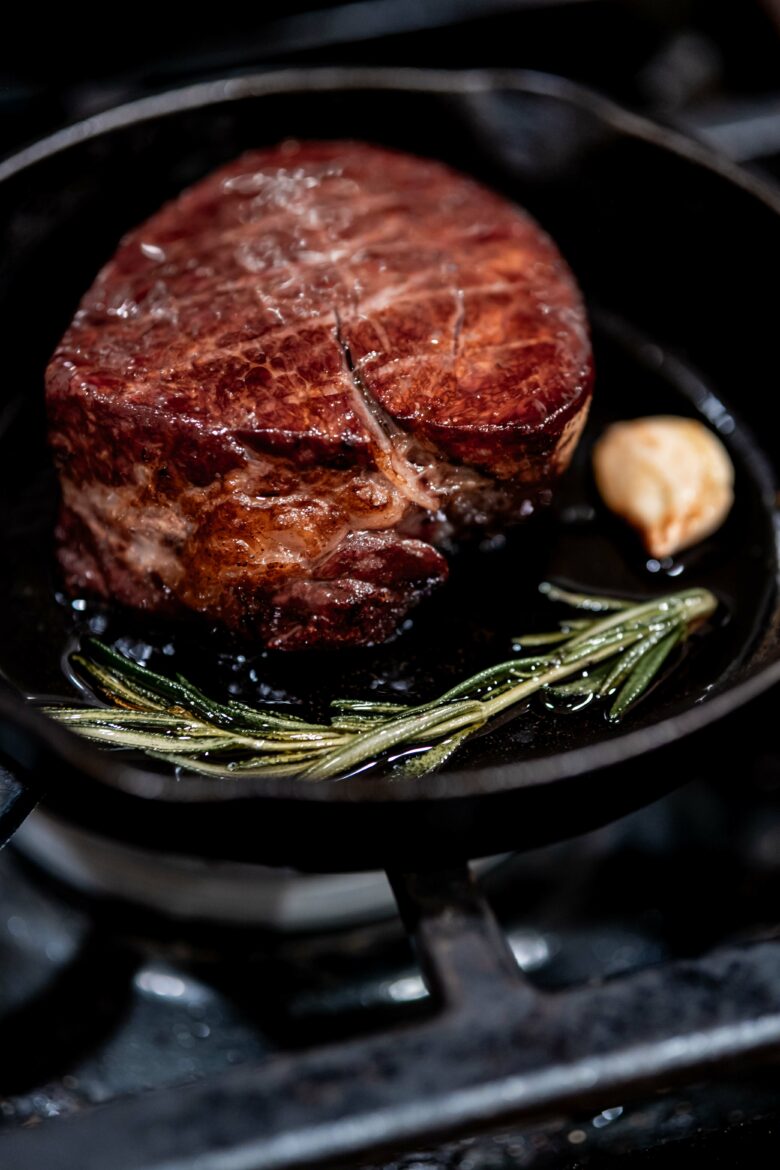
Step 5: Just before the steaks are ready to come out of the oven, heat a bit of oil in a cast iron skillet over high heat. Transfer the steaks to the skillet and sear for a total of two minutes, turning every 30 seconds.
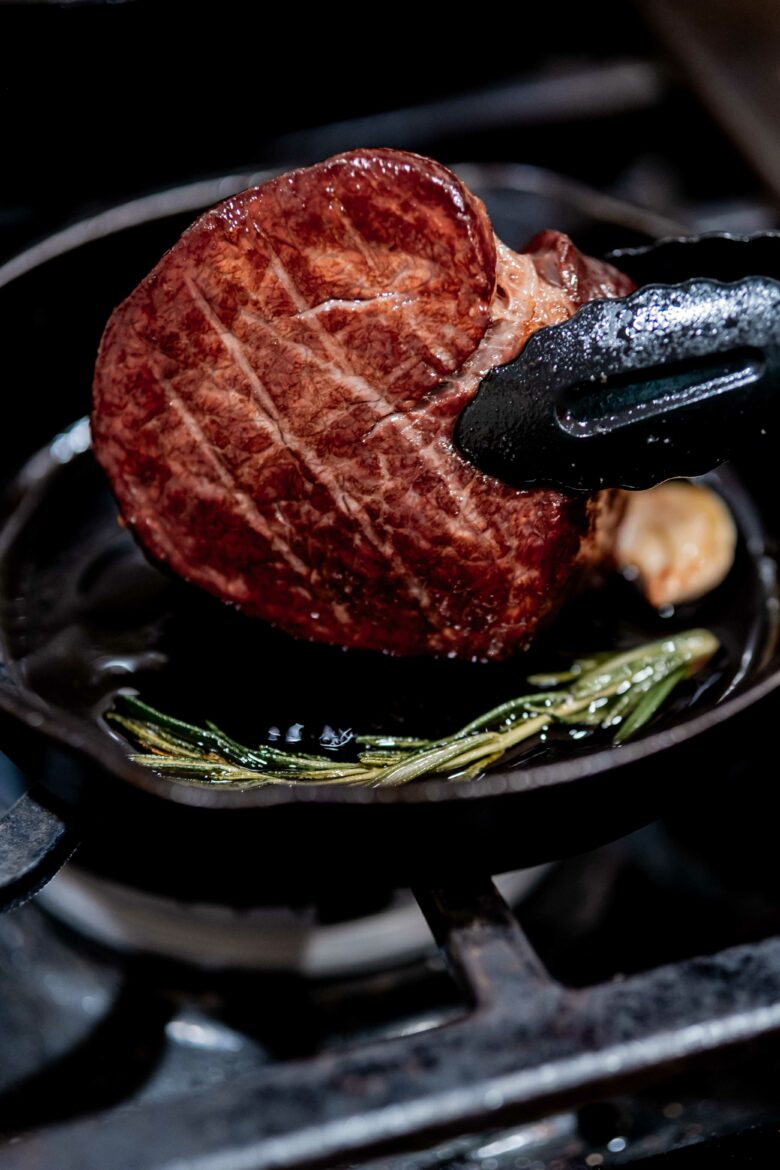
Step 6: Don’t forget to sear the sides of the filet mignon, as well! No need to let the steaks rest, reverse seared filet mignon can be served immediately.
Storage and reheating
Leftover reverse sear filet mignon can be stored in an airtight container in the fridge for 3-4 days.
On those rare occasions that we have leftovers, I actually use the reverse sear method to reheat the steaks.
To reheat filet mignon, simply cook them in the oven at 240°F (115°C) until they reach 100°F (38°C) and then finish them with a hot sear. This method prevents the steaks from drying out and makes sure your meat stays a nice medium to medium-rare.
Recipe variations
Filet mignon is leaner than other steaks, which can result in a more tender texture. But the lack of marbling and fat means the flavor tends to be more on the mild side. That’s why we like to add extra flavor to reverse sear filet mignon with one of these options:
- Finish your steaks on the grill. Using a grill for the final sear adds a wonderful smokiness the filet mignon.
- Add compound butter. Topping your steaks with a pat of compound butter adds richness and depth to the filet mignon. We used garlic rosemary butter this time around!
- Butter baste your steaks. Spooning melted butter over your steaks during the final sear is another great way to add flavor! This reverse sear T-bone recipe includes easy-to-follow instructions for butter basting.
- Make filet mignon with blue cheese sauce. The richness of blue cheese is the perfect complement to the subtle flavors of filet mignon!
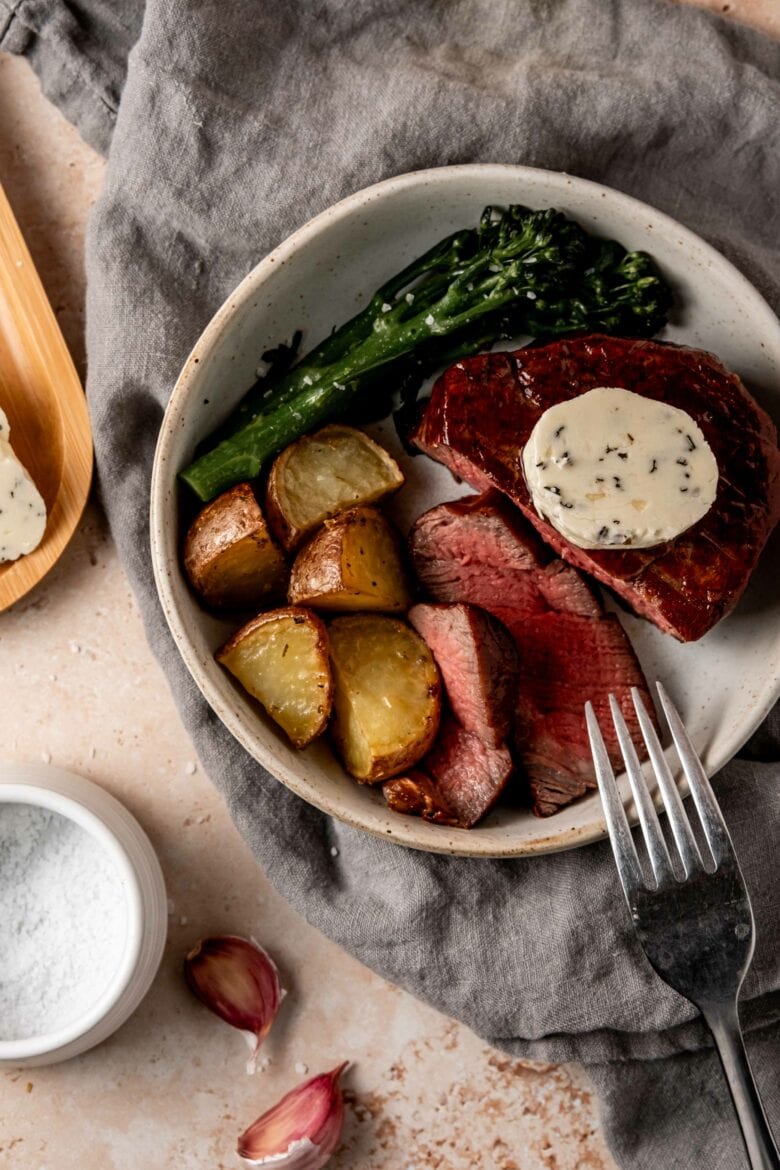
Expert tips and tricks
- Plan in advance. Salt your steaks a day in advance and let them sit overnight in the fridge for optimal results.
- Choose thick steaks. Thick-cut steaks are ideal for reverse searing filet mignon.
- Use a meat thermometer. An instant read thermometer is the best way to ensure you get the perfect cook on your steaks.
- Add some flavor! Serve your steaks with compound butter or your favorite sauce to enhance filet mignon’s mild flavor.
FAQs
Reverse searing is a method of slow cooking a steak (or other meat) to your desired temperature before finishing it with a sear. Cooking the steak low and slow makes for a more even cook with juicier meat. It also helps ensure no part of the meat is overcooked. Searing the steak after it has cooked to perfection also results in a crispier crust!
Moisture on the surface of a steak can hinder the Maillard reaction — the chemical reaction that gives browned steaks their beautifully complex flavors. Cooking the steaks in the oven removes surface moisture, which means your steaks will brown and crisp up much better and need much less time in the pan, which prevents overcooking!
Nope! This isn’t necessary with the reverse sear method, as we’ll be cooking the steaks low and slow, which ensures even cooking.
While we generally say to each his own when it comes to steak temperature, filet mignon is a different story. We strongly recommend cooking filet mignon rare to medium-rare for the most tender and juicy result. The lack of marbling and excess fat in filet mignon makes it prone to drying out or becoming tough if cooked to higher temperatures.
While you normally should let steak rest for 5-10 minutes to let the juices redistribute after cooking, this step isn’t necessary when reverse searing filet mignon. You can serve your filet mignon immediately!
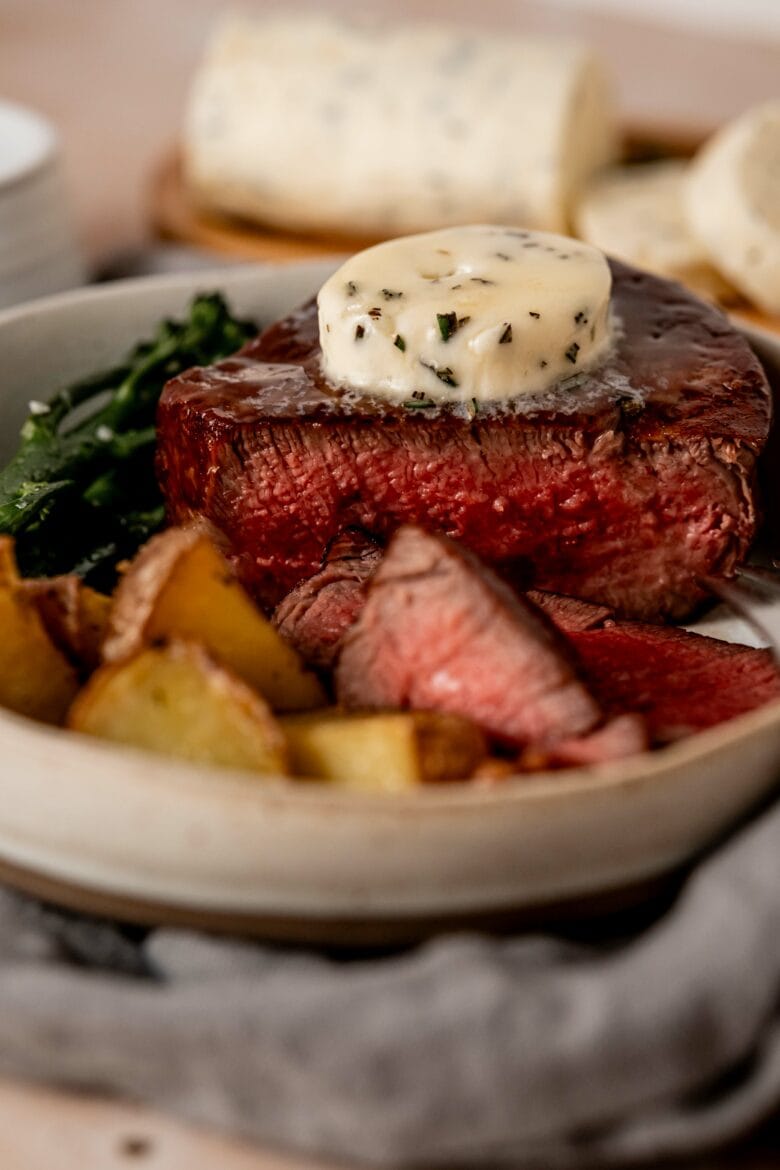
Loving this reverse sear filet mignon recipe? Don’t miss our Reverse Sear Rack of Lamb and Reverse Sear T-Bone Steak!
And for more dinners perfect for date night, make sure to check out these recipes:
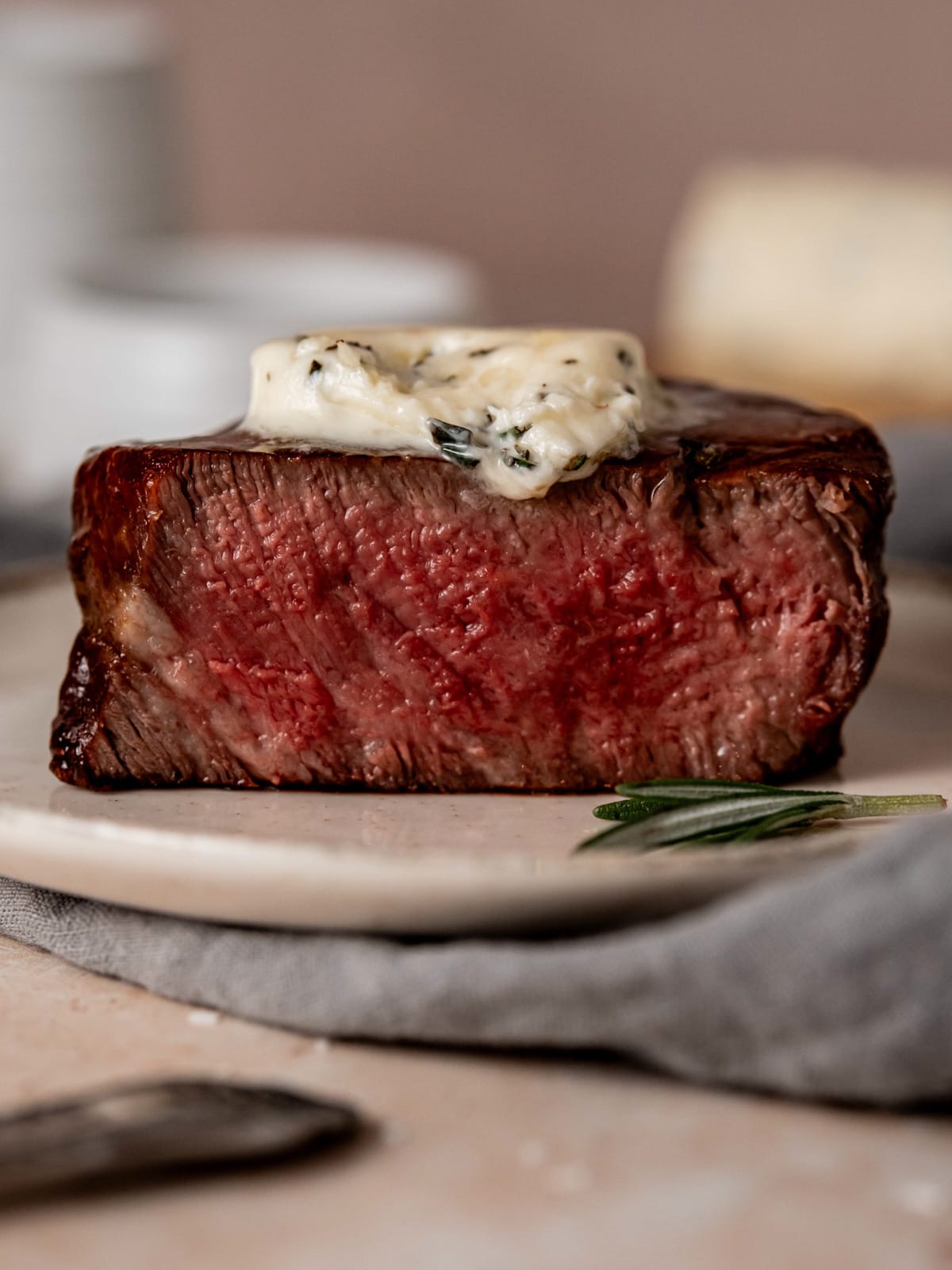
Reverse Sear Filet Mignon Recipe
- Total Time: 50 minutes
- Yield: 2 steaks
- Prep Time: 5 minutes
- Cook Time: 45 minutes
- Category: Dinner
- Method: Reverse Sear
- Cuisine: Global
Ingredients
- 2 filet mignon steaks, about 8 ounces (230 grams) each and preferably 2 inches (5 cm) thick*
- kosher salt to taste
- 1–2 tablespoons neutral oil (such as canola or vegetable oil)
Instructions
- Generously season the steaks on all sides with kosher salt.*
- Optional: Fit a rimmed baking sheet with a wire rack. Place the steaks on the wire rack and transfer to the refrigerator to sit uncovered for up to 24 hours (and at least 2 hours).
- Preheat oven to 240°F (115°C). Place a wire rack on a rimmed baking sheet and place the steaks on top.
- Transfer the steaks to the oven and cook until they reach an internal temperature of approximately 15 degrees Fahrenheit below your desired doneness. So for a target temperature of 125°F (52°C), which is between rare and medium-rare, the steaks would need to come out of the oven at 110°F (43°C). Cooking time generally ranges from 20-40 minutes. Start checking your steaks with an instant read thermometer early to avoid overcooking.
- When the steaks are almost ready, heat 1-2 tablespoons of oil over high heat in a cast iron skillet or heavy-bottomed stainless steel skillet.
- When the skillet is hot and the oil is almost smoking, begin searing the steaks. Sear the steaks for two minutes in total, turning every 30 seconds to cook evenly. Briefly sear the sides of the steaks as well. Serve immediately.
Notes
Choosing filet mignon: Thick steaks work best for reverse searing. I recommend using steaks that are at the very least 1.5 inches (4 cm) thick and preferably about 2 inches (5 cm) thick.
Seasoning: If skipping step 2, salt your steaks right before they go in the oven.
Finishing on the grill: When your steaks are almost done cooking in the oven, prep your grill and heat to high. Transfer the steaks to the hottest part of the grill and cook, turning frequently, approximately two minutes in total.
Steak temperature: Filet mignon’s lean nature makes it prone to becoming tough and less juicy the longer it cooks. For this reason, we highly recommend enjoying your filet mignon at rare (120°F / 49°C) or medium-rare (130°F / 54°C).
Nutrition
- Serving Size: 1 steak
- Calories: 700
This post may contain affiliate links through which we may earn a small commission at no additional cost to you. We only recommend products that we genuinely love and would use ourselves.